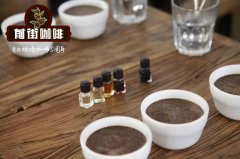The stew won't evaporate? Is it the powder or the wrong posture?

Professional coffee knowledge exchange more coffee bean information please follow the coffee workshop (Wechat official account cafe_style)
"stew" is often expressed as Bloom in English instructions, which refers to the preparatory action of wetting a small amount of hot water evenly on the surface of coffee powder during hand flushing and before formal water injection.
About the steaming of coffee. Many baristas or enthusiasts have different opinions on the way, time and amount of steaming, and learn the process of steaming from the physics of steaming in coffee making. When the coffee bean is ground into a coffee powder, the coffee powder we can see with the naked eye is a whole, but in fact, the microstructure of the coffee powder is actually similar to that of a honeycomb, with countless penetrating holes in it. The freshly roasted coffee beans will continue to emit gas, and many of these gases will be stored in these holes in the coffee beans at the beginning.
Just imagine, hot water is poured directly and at high speed on such a coffee powder, the hot water will be extracted close to the periphery of the coffee powder, and the internal gas is blocked by water and cannot be eliminated. And because of the presence of gas in the powder, the hot water can not seep into the coffee powder. So hot water will only constantly wash the surface of the coffee powder, resulting in excessive extraction on the surface of the coffee powder, but not on the inside.
So there are two purposes of steaming in coffee:
First:
In order to release the gas in the coffee particles, it is mainly carbon dioxide. In order to achieve this goal, the amount of water needed must be the right amount, and gently let the water stop on the coffee powder and let it squeeze into the coffee powder to force the gas out to ensure a smooth extraction. For hand flushing with this production method, the amount of steaming water is the best to master. The amount of steaming water is just enough to soak the powder layer until the lower edge of the powder layer begins to drip. But at this point, there are high requirements for the way of water injection, which requires that water injection must be gentle, stable and fast, and it is best that the surface of the foggy powder layer does not blister. Because if blisters, it means that the local high water injection leads to the flow directly through the powder layer flow, and the powder particles are not evenly immersed in water. Generally speaking, the closer it is to the baking time, the more bubbles usually occur during prepreg. On the other hand, the coffee beans with deeper roasting degree will release more gas in the steaming process than the coffee beans with lower roasting degree because of less water content.
Second:
If the coffee particles after exhaust gas can be evenly absorbed and saturated, the subsequent extraction can be uniform. In short, during steaming, the air between the coffee powder particles expands and releases a large amount of carbon dioxide, while a short gap layer between the coffee powder particles will provide the space needed for hot water to pass through the powder layer during formal water injection.
The following points will be conducive to the smooth achievement of steaming:
1. Before steaming, make sure the coffee powder is as horizontal as possible in the filter screen or filter paper.
2. When steaming, the force of water injection is not too strong, gently.
3. The best amount of water for steaming is 10% of the total water. For 240 milliliters of coffee, the amount of water needed for steaming is about 24 milliliters.
4. in the process of steaming, the amount of extract flowing is as little as possible; when there is too much extract in the kettle, the amount of water injected should be reduced, or attention should be paid to the degree of grinding.
5. The steaming time is about 30 to 60 seconds. When the expansion of the coffee powder surface is over and the surface is about to shrink, it means that the steaming is complete and the first water injection can be started.
In an ideal steaming process, the coffee powder will slowly expand in the presence of hot water, as if the coffee powder keeps pushing the hot water to the top. At this time, the surface tension of the water and the pressure caused by the carbon dioxide released by the coffee powder add up to the gravitational acceleration of slightly larger water and the downward pulling force caused by capillarity. The best time for the end of steaming will be the sum of the surface tension of water and the pressure produced by carbon dioxide released by coffee powder when the expansion reaches its limit, which is slightly equal to the gravity acceleration of water and the downward pulling force and stable water injection speed caused by capillarity. at this time, the void layer in front of the coffee powder particles has not yet collapsed, so it is a good time to start the first water injection.
Although the longer steaming time may get a thicker taste, it is also easy to affect the cooking results because of the larger surface area in contact with the air and the rapid decrease of water temperature.
Whether a cup of hand-brewed coffee has a pleasant flavor, apart from the nature and freshness of coffee beans, mostly depends on whether a good filter layer is formed, and steaming will determine whether the hot water can pass evenly through the coffee powder. In Bloom is not only the prelude to coffee extraction, but also one of the key steps that can not be ignored in coffee extraction.
Important Notice :
前街咖啡 FrontStreet Coffee has moved to new addredd:
FrontStreet Coffee Address: 315,Donghua East Road,GuangZhou
Tel:020 38364473
- Prev

Why does the coffee powder smell delicious and attractive, but it doesn't smell so good when it comes out? It runs.
Professional coffee knowledge exchange more information about coffee beans Please follow the coffee workshop (Wechat official account cafe_style). It seems that many friends prefer to smell coffee rather than drink coffee. Some friends don't necessarily like coffee, but they are often attracted by the smell of freshly ground coffee powder. When the fragrant coffee powder is brewed into liquid coffee, you will feel it.
- Next

Is coffee really addictive? Is it one of the symptoms of addiction that you can't sleep without coffee?
Professional coffee knowledge exchange more coffee bean information Please follow the coffee workshop (Wechat official account cafe_style) many people like to drink coffee, but they are worried that drinking too much coffee will lead to addiction, will they become addicted if they drink too much coffee? Let's take a look at some common misunderstandings about drinking coffee. Misunderstanding 1. There is some truth in the saying that coffee is addictive, but it depends on how you feel about it.
Related
- Beginners will see the "Coffee pull flower" guide!
- What is the difference between ice blog purified milk and ordinary milk coffee?
- Why is the Philippines the largest producer of crops in Liberia?
- For coffee extraction, should the fine powder be retained?
- How does extracted espresso fill pressed powder? How much strength does it take to press the powder?
- How to make jasmine cold extract coffee? Is the jasmine + latte good?
- Will this little toy really make the coffee taste better? How does Lily Drip affect coffee extraction?
- Will the action of slapping the filter cup also affect coffee extraction?
- What's the difference between powder-to-water ratio and powder-to-liquid ratio?
- What is the Ethiopian local species? What does it have to do with Heirloom native species?

